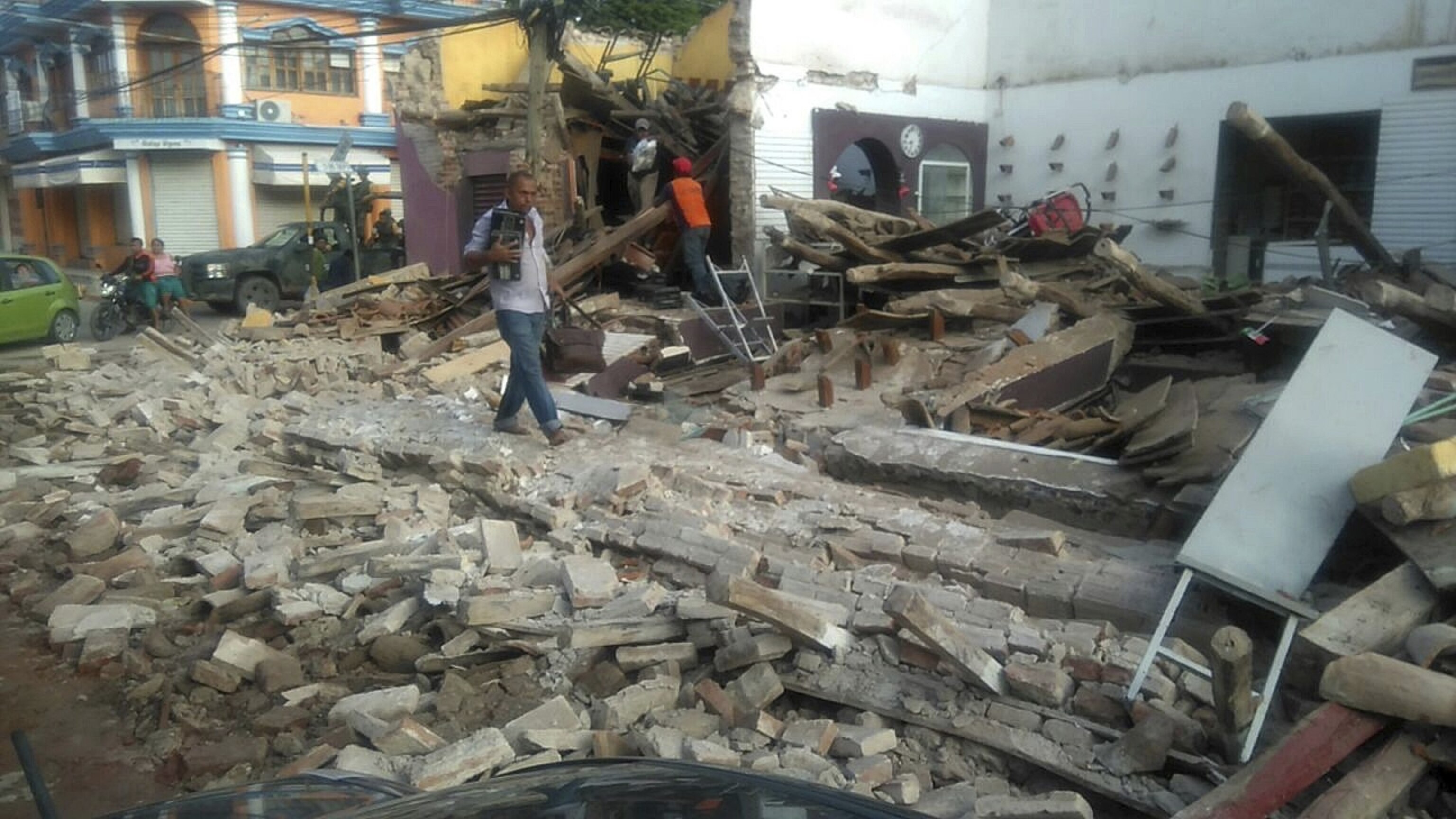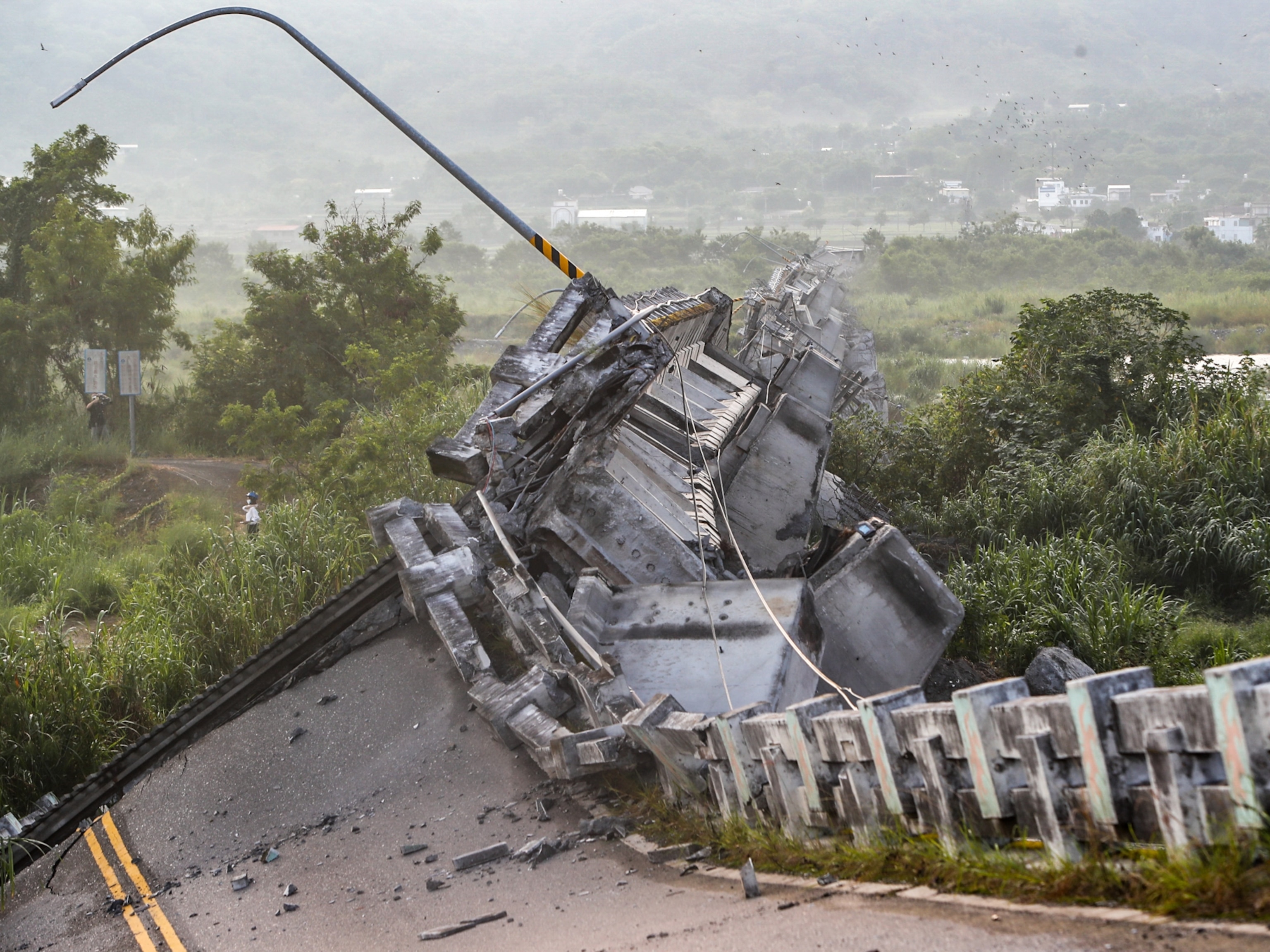






Pictures Show Mexico Scrambling After Major Earthquake
The earthquake was the strongest the region has felt in nearly a century.
Overnight, the U.S. Geological Service measured an 8.1 magnitude earthquake that hit Mexico near the southern state Chiapas. It’s the strongest earthquake the country has seen in 85 years.
The Pacific Tsunami Warning Center confirmed tsunami waves measuring three feet off the coast of Mexico following the earthquake, along with magnitude 5.0 aftershocks.
According to Mexico’s National Seismological Service, which reported the earthquake at an 8.2 magnitude, the last earthquake of this magnitude hit the country on June 3, 1932, and left 400 people dead.
As of Friday morning, dozens of deaths had been reported, but the country remains on watch for continued threats. An automated system run by the U.S. Geological Survey, called PAGER, estimates damage from earthquakes based on the number of people living in affected regions and the scale of the region’s development. For Mexico’s earthquake, it estimated that as many as 1,000 people and a billion U.S. dollars could be lost as a combined result of tremors, tsunamis, and landslides.
More tsunami waves are expected to hit, and in farther-flung regions. Sudden displacement of ocean water from disasters such as earthquakes, volcanic eruptions, landslides, and meteorite strikes are capable of triggering waves that travel thousands of miles. To prepare, the National Weather Service’s Tsunami Warning System has issued warnings for regions in Central and South America, as well as the southern Pacific.
Chiapas is no stranger to quakes, as one of the most active seismic areas in Mexico. It sits at the convergence of the Cocos Plate, which is being shoved under the North American Plate.
The plates finally converged after years of motion, releasing a tremendous amount of energy in one quake, the president of the Geological Society of Washington, Callan Bentley, explained in a blog post on the American Geophysical Union’s website. Nearby volcanoes are formed from this area where one plate dives beneath another, called a subduction zone.
“The major earthquake that occurred last night was not a unique or one-off event. The area is known to have lots and lots of earthquakes over its long history of human habitation,” wrote Bentley.
Mexico’s military has been mobilized to help those in need, according to CNN. Electricity has returned to almost three quarters of the million homes that lost power overnight, but damage to buildings along the coast has been more devastating.
The region is expected to know the full extent of the damage as rescue efforts continue throughout the weekend.
Related Topics
You May Also Like
Go Further
Animals
- How can we protect grizzlies from their biggest threat—trains?How can we protect grizzlies from their biggest threat—trains?
- This ‘saber-toothed’ salmon wasn’t quite what we thoughtThis ‘saber-toothed’ salmon wasn’t quite what we thought
- Why this rhino-zebra friendship makes perfect senseWhy this rhino-zebra friendship makes perfect sense
- When did bioluminescence evolve? It’s older than we thought.When did bioluminescence evolve? It’s older than we thought.
- Soy, skim … spider. Are any of these technically milk?Soy, skim … spider. Are any of these technically milk?
Environment
- Are the Great Lakes the key to solving America’s emissions conundrum?Are the Great Lakes the key to solving America’s emissions conundrum?
- The world’s historic sites face climate change. Can Petra lead the way?The world’s historic sites face climate change. Can Petra lead the way?
- This pristine piece of the Amazon shows nature’s resilienceThis pristine piece of the Amazon shows nature’s resilience
- Listen to 30 years of climate change transformed into haunting musicListen to 30 years of climate change transformed into haunting music
History & Culture
- Meet the original members of the tortured poets departmentMeet the original members of the tortured poets department
- Séances at the White House? Why these first ladies turned to the occultSéances at the White House? Why these first ladies turned to the occult
- Gambling is everywhere now. When is that a problem?Gambling is everywhere now. When is that a problem?
- Beauty is pain—at least it was in 17th-century SpainBeauty is pain—at least it was in 17th-century Spain
Science
- Here's how astronomers found one of the rarest phenomenons in spaceHere's how astronomers found one of the rarest phenomenons in space
- Not an extrovert or introvert? There’s a word for that.Not an extrovert or introvert? There’s a word for that.
- NASA has a plan to clean up space junk—but is going green enough?NASA has a plan to clean up space junk—but is going green enough?
- Soy, skim … spider. Are any of these technically milk?Soy, skim … spider. Are any of these technically milk?
Travel
- Could Mexico's Chepe Express be the ultimate slow rail adventure?Could Mexico's Chepe Express be the ultimate slow rail adventure?
- What it's like to hike the Camino del Mayab in MexicoWhat it's like to hike the Camino del Mayab in Mexico




